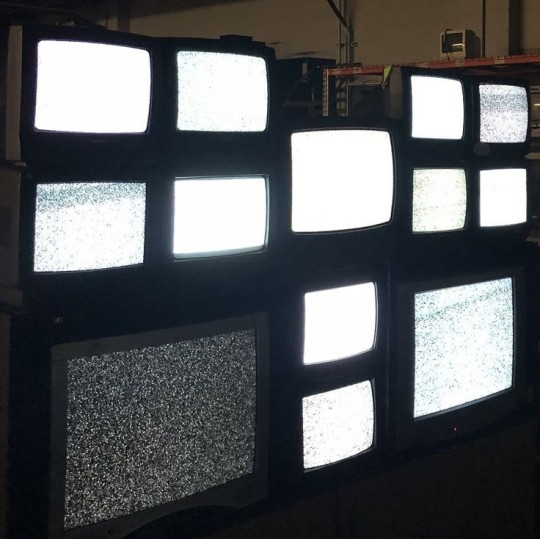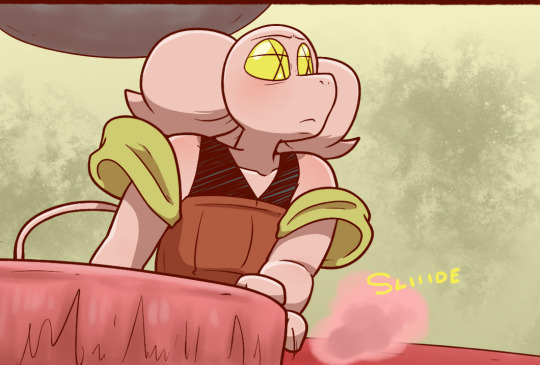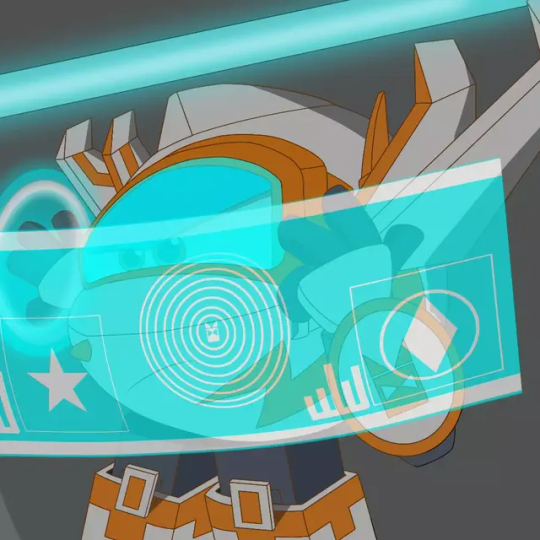#ARRAY
Explore tagged Tumblr posts
Text

YOU'RE NOT PERFECT
1K notes
·
View notes
Text

702 notes
·
View notes
Text
Nerdy Girl at Home (by @arrayofspankings2)

@arrayofspankings2 Jan 4
Myrika was a smart young woman who excelled in college and was called a walking dictionary on campus. But at home, she lived with a strict mom who while she admired her daughter's intelligence did not have any sympathy for her "behavior problems." With Myrika's mind came a mouth with no filter and a lack of facial expressions which led to her mom saying she had a bad attitude or was lying when asked about things. Or her mom would take her looking away while talking to her as disrespect. This meant every other day or so her mom was pulling her pants and panties down, putting her over the maternal lap, and disciplining her daughter by spanking her bare bottom with a hairbrush. Myrika's butt cheeks bounced and burned with the sting of the hairbrush as she bawled her eyes out, wondering why her mom was so unfair. The spankings seemed so undeserved, for "being rude" or "having an attitude" when she hadn't meant to and didn't understand why her buttocks kept receiving spanks from mom's brush. But protests meant extra spanks and Myrika's butt was already sore too often to risk it- though she sometimes did and got more spanks! One day Myrika's mom would find out she had been unfair to her and Myrika would turn the tables, baring her mom's butt and giving her a long, hard spanking with the hairbrush.
***
'One Day' turned out much differently. Once Myrika graduated, got a job, and moved out she began to understand her mom's frequent complaints. After only two weeks she admitted that the spankings had done her good and after four months finally asked her mom to spank her once again (which her mom did with gusto, making up for lost time!).
These days Myrika never visits without getting a spanking just like she used to - two, at least, if she stays a week - and sometimes makes the two-hour drive just to get 'a little caught up'.
Then, even if it's the next morning, she makes a very painful two-hour drive 'back home'...
15 notes
·
View notes
Text

Four of Eight
54 notes
·
View notes
Text

adorable Pink frog sitting among a vibrant flowers
Your support unlocks new creative adventures for me!
#pink#frog#cute#animal#kawaii#cartoon#vector#drawing#watercolor#art#sitting#vibrant#adorable#smile#diverse#flowers#leaves#array#colorful#charm#design#charming#whimsical#illustration#delightful#nature#harmonious
13 notes
·
View notes
Text

#esoteric#mystery schools#photon belt#spiritual initiation#theology#self love#spiritual awakening#spiritual journey#higher self#alchemy#transmutation#array#elements#four elements#planetary science#a perfect circle#secrets
14 notes
·
View notes
Text
-IF I- UPDATE XVII-669-44

PHEW! Here we are… Chapter's end. And we end with a callback to a much earlier chapter.
I deeply appreciate everyone's patience with the erratic scheduling for this one. It was a touch difficult to get through. But we're here! We'll be taking a break for a couple months to recoup and then properly plan the next chapter…so stay tuned for when we return in November!
#if i#if i (comic)#if i (webcomic)#comic#webcomic#my comic#my webcomic#my art#my characters#my ocs#update#chapter 17#array#alien#aliens#seraph#seraphim#ani#vahn#surreal#fantasy#adventure#drama
6 notes
·
View notes
Text

Array! In harem au, Array is Error's mother (she doesn't exist in Apple Twins Council, just in the harem au version). Array and Error both come from an area that is largely unknown to the Apple Empire and that side of the continent (mostly because they're separated on land by a rather treacherous mountain range very few go between, and on sea by a very bad pirate problem)
Array is a weaver by trade, and is one of the few people Error will actually listen to. Several years ago raiders began razing their region for resources and taking the inhabitants for slaves, and Error was separated from his family. Array's location is currently unknown.
3 notes
·
View notes
Text
-IF I- UPDATE XVII-667-42

New page of IF I is up. (almost missed it, phew!)
Vahn is stepping out for a moment to get some fresh air. Went from tons of dialogue to NO dialogue at all on this page lol.
#if i#if i (comic)#if i (webcomic)#comic#webcomic#my art#my comic#my webcomic#update#chapter 17#alien#aliens#seraph#seraphim#vahn#array#surreal#fantasy#adventure#drama
6 notes
·
View notes
Text

Array supercharge
@variabel-y what do u think?
30 notes
·
View notes
Text
https://www.futureelectronics.com/p/electromechanical--circuit-protection--tvs-diodes/lc03-3-3-tbt-semtech-5141093
Transient voltage suppressor diode, TVS diode application, Bi-directional TVS
LC Series 18 V 1800 W SMT Low Capacitance TVS for High Speed Interface - SOIC-8
#Semtech#LC03-3.3.TBT#Circuit Protection Devices#TVS Diodes#transient voltage suppressor diode#TVS diode application#Bi-directional TVS#Zener diodes#electro-static discharge#suppression diode#Silicon-avalanche diodes#array#TVS USB diode
2 notes
·
View notes
Text


The Array, designed by Jim Martin and Dan Curry for the Star Trek: Voyager pilot, digitally recreated by Eaglemoss Publications for the Official Starships Collection.
#nacene#caretaker#caretaker array#caretaker's array#array#star trek: voyager#star trek#jim martin#dan curry#eaglemoss publications ltd#uncertain attribution#anonymous#space station#spacecraft#3d#cgi
6 notes
·
View notes
Text
Normally I just post about movies but I'm a software engineer by trade so I've got opinions on programming too.
Apparently it's a month of code or something because my dash is filled with people trying to learn Python. And that's great, because Python is a good language with a lot of support and job opportunities. I've just got some scattered thoughts that I thought I'd write down.
Python abstracts a number of useful concepts. It makes it easier to use, but it also means that if you don't understand the concepts then things might go wrong in ways you didn't expect. Memory management and pointer logic is so damn annoying, but you need to understand them. I learned these concepts by learning C++, hopefully there's an easier way these days.
Data structures and algorithms are the bread and butter of any real work (and they're pretty much all that come up in interviews) and they're language agnostic. If you don't know how to traverse a linked list, how to use recursion, what a hash map is for, etc. then you don't really know how to program. You'll pretty much never need to implement any of them from scratch, but you should know when to use them; think of them like building blocks in a Lego set.
Learning a new language is a hell of a lot easier after your first one. Going from Python to Java is mostly just syntax differences. Even "harder" languages like C++ mostly just mean more boilerplate while doing the same things. Learning a new spoken language in is hard, but learning a new programming language is generally closer to learning some new slang or a new accent. Lists in Python are called Vectors in C++, just like how french fries are called chips in London. If you know all the underlying concepts that are common to most programming languages then it's not a huge jump to a new one, at least if you're only doing all the most common stuff. (You will get tripped up by some of the minor differences though. Popping an item off of a stack in Python returns the element, but in Java it returns nothing. You have to read it with Top first. Definitely had a program fail due to that issue).
The above is not true for new paradigms. Python, C++ and Java are all iterative languages. You move to something functional like Haskell and you need a completely different way of thinking. Javascript (not in any way related to Java) has callbacks and I still don't quite have a good handle on them. Hardware languages like VHDL are all synchronous; every line of code in a program runs at the same time! That's a new way of thinking.
Python is stereotyped as a scripting language good only for glue programming or prototypes. It's excellent at those, but I've worked at a number of (successful) startups that all were Python on the backend. Python is robust enough and fast enough to be used for basically anything at this point, except maybe for embedded programming. If you do need the fastest speed possible then you can still drop in some raw C++ for the places you need it (one place I worked at had one very important piece of code in C++ because even milliseconds mattered there, but everything else was Python). The speed differences between Python and C++ are so much smaller these days that you only need them at the scale of the really big companies. It makes sense for Google to use C++ (and they use their own version of it to boot), but any company with less than 100 engineers is probably better off with Python in almost all cases. Honestly thought the best programming language is the one you like, and the one that you're good at.
Design patterns mostly don't matter. They really were only created to make up for language failures of C++; in the original design patterns book 17 of the 23 patterns were just core features of other contemporary languages like LISP. C++ was just really popular while also being kinda bad, so they were necessary. I don't think I've ever once thought about consciously using a design pattern since even before I graduated. Object oriented design is mostly in the same place. You'll use classes because it's a useful way to structure things but multiple inheritance and polymorphism and all the other terms you've learned really don't come into play too often and when they do you use the simplest possible form of them. Code should be simple and easy to understand so make it as simple as possible. As far as inheritance the most I'm willing to do is to have a class with abstract functions (i.e. classes where some functions are empty but are expected to be filled out by the child class) but even then there are usually good alternatives to this.
Related to the above: simple is best. Simple is elegant. If you solve a problem with 4000 lines of code using a bunch of esoteric data structures and language quirks, but someone else did it in 10 then I'll pick the 10. On the other hand a one liner function that requires a lot of unpacking, like a Python function with a bunch of nested lambdas, might be easier to read if you split it up a bit more. Time to read and understand the code is the most important metric, more important than runtime or memory use. You can optimize for the other two later if you have to, but simple has to prevail for the first pass otherwise it's going to be hard for other people to understand. In fact, it'll be hard for you to understand too when you come back to it 3 months later without any context.
Note that I've cut a few things for simplicity. For example: VHDL doesn't quite require every line to run at the same time, but it's still a major paradigm of the language that isn't present in most other languages.
Ok that was a lot to read. I guess I have more to say about programming than I thought. But the core ideas are: Python is pretty good, other languages don't need to be scary, learn your data structures and algorithms and above all keep your code simple and clean.
#programming#python#software engineering#java#java programming#c++#javascript#haskell#VHDL#hardware programming#embedded programming#month of code#design patterns#common lisp#google#data structures#algorithms#hash table#recursion#array#lists#vectors#vector#list#arrays#object oriented programming#functional programming#iterative programming#callbacks
17 notes
·
View notes
Text

‘Tres Generaciones, Tres Patrias’
Work by Angurria in Temple-Beaudry, painted at the Array offices for 2019’s National Day Of Racial Healing.
#Angurria#avaduvernay#array#mural#art#laart#urbanart#streetart#lastreetart#streetartla#losangeles#templebeaudry
7 notes
·
View notes
Text

Torso structure
50 notes
·
View notes
Text

How to convert List to Array?
Let us see how to convert List to Array:
#java#programming#javaprogramming#code#coding#engineering#computer#computerscience#computertechnology#software#softwaredevelopment#education#technology#list#array#online
3 notes
·
View notes